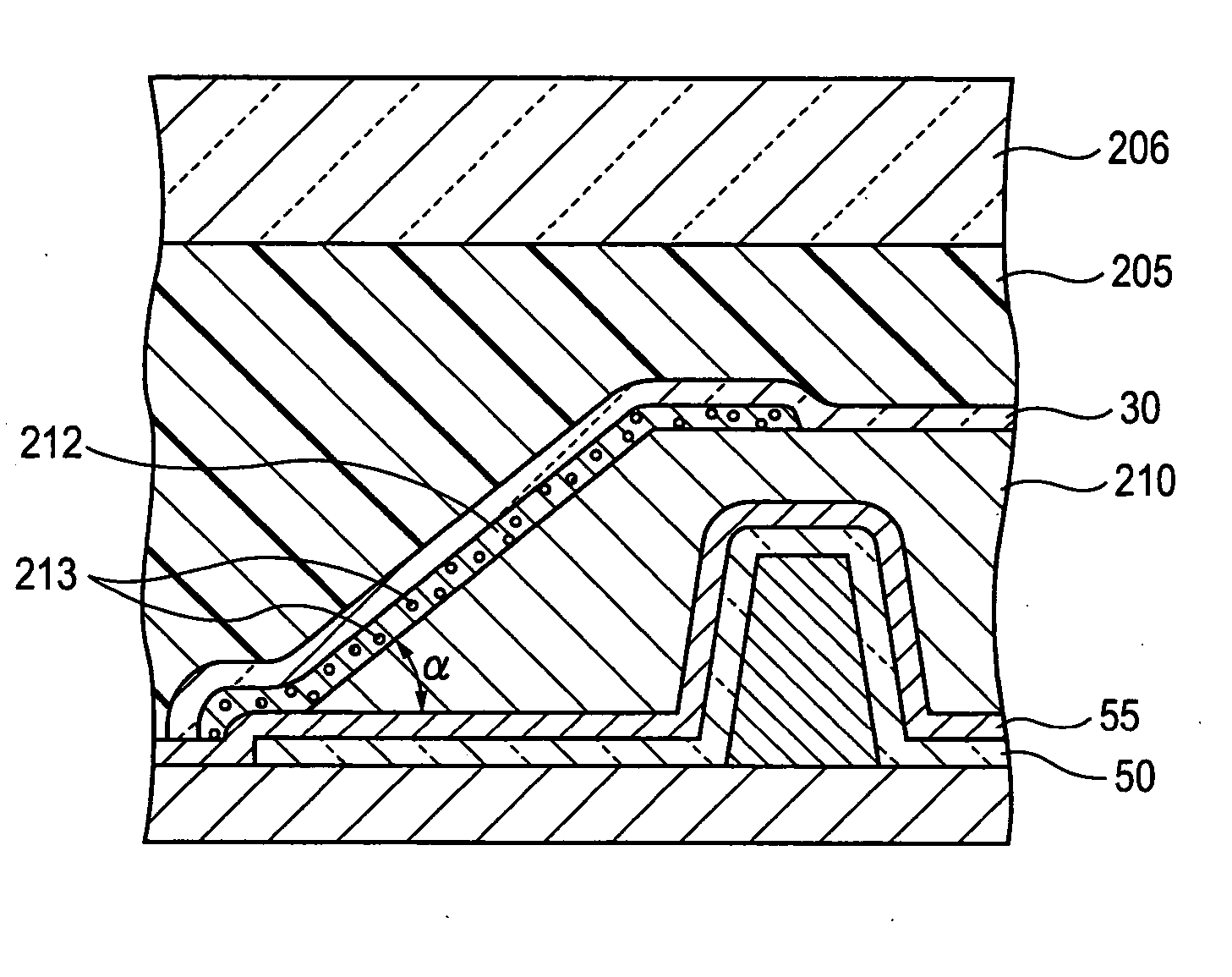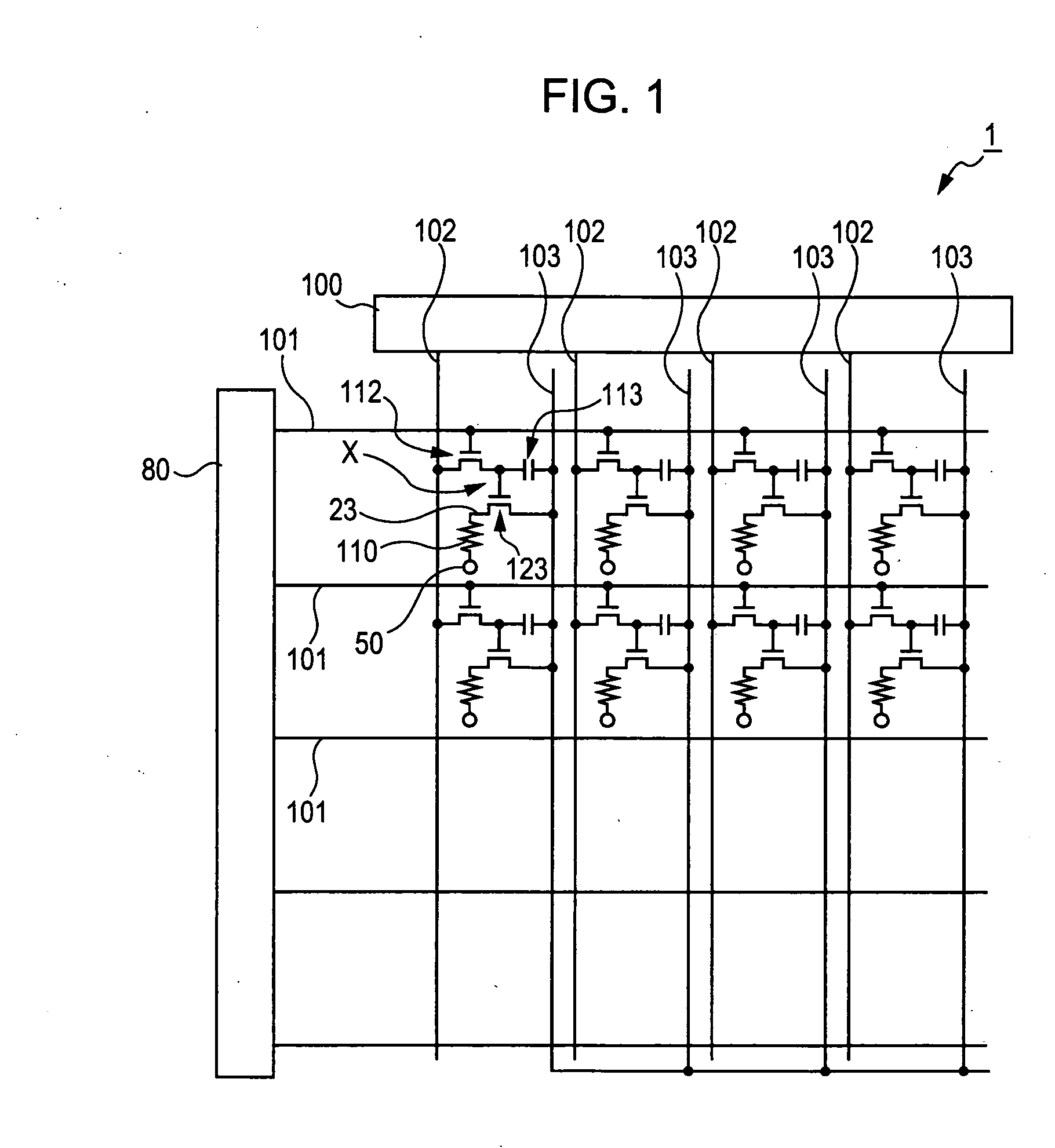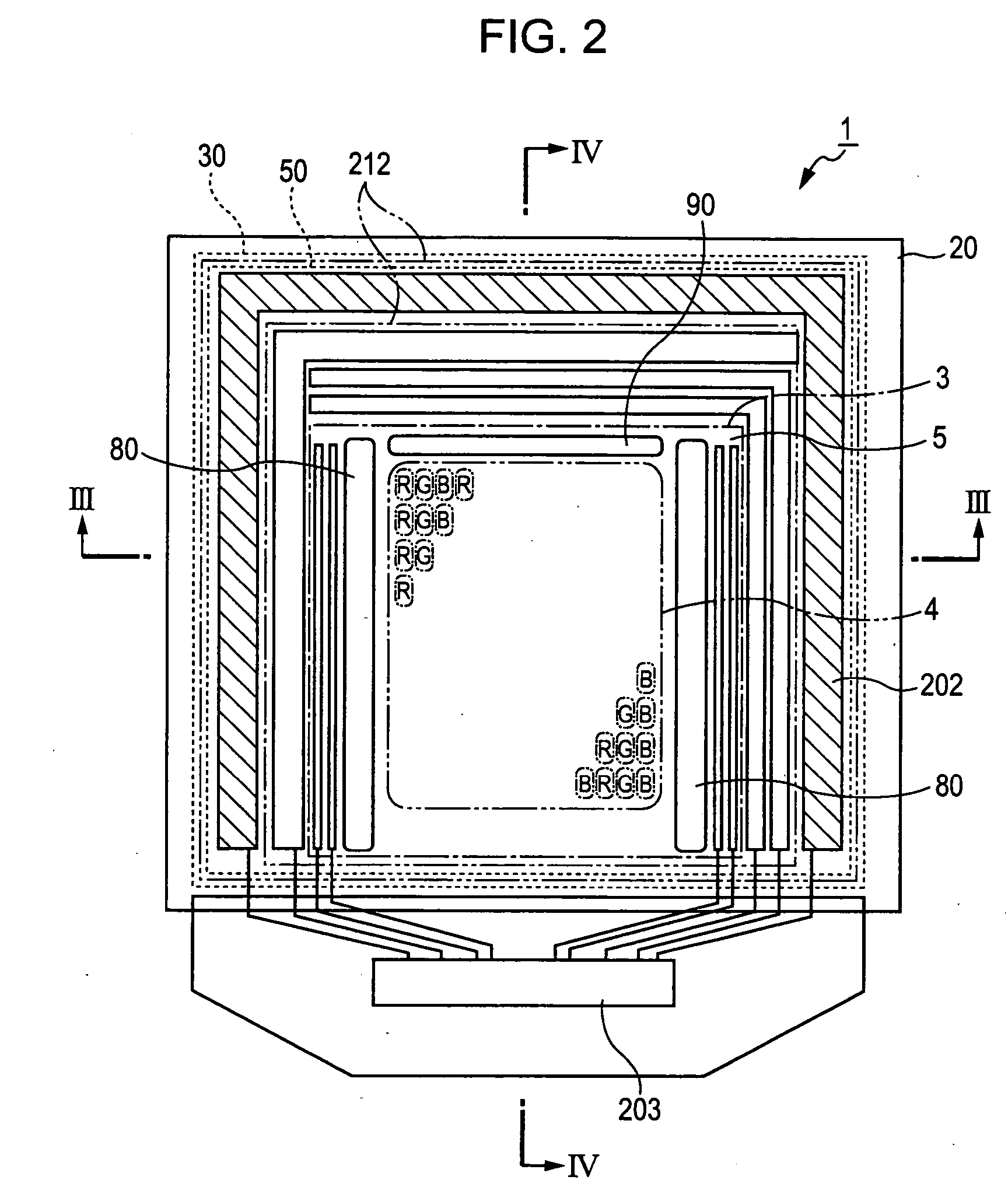Light-emitting device, method for manufacturing light-emitting device, and electronic apparatus
a technology of light-emitting devices and electronic devices, which is applied in the direction of discharge tubes/lamp details, luminescent screens, transportation and packaging, etc., can solve the problems of reducing life, affecting the effect of light-emitting device performance, and affecting the quality of light-emitting devices, so as to prevent moisture penetration and/or oxygen penetration, the effect of easy damage or crack
- Summary
- Abstract
- Description
- Claims
- Application Information
AI Technical Summary
Benefits of technology
Problems solved by technology
Method used
Image
Examples
first embodiment
[0061]FIG. 1 is a wiring diagram of an EL display device (a light-emitting device) 1 according to a first embodiment of the invention.
[0062] The EL display device 1 includes thin-film transistors (hereinafter simply referred to as TFTs) serving as switching elements and is of an active matrix type.
[0063] In the drawings, in order to show layers and members included in the EL display device 1 on a recognizable scale, different scales are used depending on the size of the layers and members.
[0064] With reference to FIG. 1, the EL display device 1 includes a plurality of scanning lines 101, a plurality of signal lines 102 extending orthogonally to the scanning line 101, a plurality of power supply lines 103 extending parallel to the signal lines 102, pixel regions X located near the intersections of the scanning lines 101 and signal lines 102.
[0065] The signal lines 102 are connected to a data line-driving circuit 100 including a shift register, a level shifter, video lines, and an...
second embodiment
[0191] An EL display device 2 according to a second embodiment of the invention will now be described. In this embodiment, the same components as those described in the first embodiment have the same reference numerals as those described in the first embodiment in order to omit the descriptions thereof.
[0192]FIG. 11 is a schematic sectional view of the EL display device 2. FIG. 12 is an enlarged view of an end portion (an outer region) of an organic buffer layer 210 included in the EL display device 2.
[0193] The EL display device 2 is different from the EL display device 1 of the first embodiment in that the EL display device 2 includes white light-emitting layers 60W and a color filter substrate 207 serving as a surface protection substrate.
[0194] The white light-emitting layers 60W are made of a white organic luminescent material such as a styrylamine-based luminescent material, an anthracene-based dopant (blue), or a rubrene-based dopant (yellow).
[0195] The following layers a...
examples
[0209] Problems caused in EL display devices will now be described. The EL display devices include organic buffer layers 210, gas barrier layers 30, and intermediate protective layers 212 each disposed therebetween.
[0210]FIG. 13 is a table showing the problems.
[0211] The EL display devices, including the intermediate protective layer 212 made of various materials, similar to the above EL display devices 1 and 2 were prepared and then subjected to a thermal cycle test or a high-humidity test. The EL display devices were evaluated if the gas barrier layers 30 had end portions (outer regions) penetrated by moisture.
[0212] The EL display devices included pixel electrodes 23 with a thickness of 100 nm; white light-emitting layers 60W with a thickness of 150 nm; cathodes 50 with a thickness of 15 nm; cathode-protecting layers 55, made of SiON, having a thickness of 100 μm; and protective layers 204 with a thickness of 100 μm. The organic buffer layers 210 had a thickness of 5 μm and th...
PUM
 Login to View More
Login to View More Abstract
Description
Claims
Application Information
 Login to View More
Login to View More - R&D
- Intellectual Property
- Life Sciences
- Materials
- Tech Scout
- Unparalleled Data Quality
- Higher Quality Content
- 60% Fewer Hallucinations
Browse by: Latest US Patents, China's latest patents, Technical Efficacy Thesaurus, Application Domain, Technology Topic, Popular Technical Reports.
© 2025 PatSnap. All rights reserved.Legal|Privacy policy|Modern Slavery Act Transparency Statement|Sitemap|About US| Contact US: help@patsnap.com



